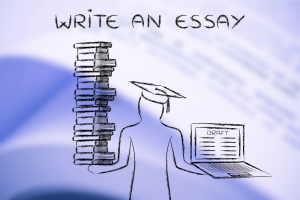
The modern digital world has progressed considerably over time. Developments in information technology have revolutionized several aspects of our everyday lives. IT has influenced every industry: education, entertainment, sports, and the health sector. The seamless integration of information technology has great potential.
The revolutionizing changes in the education sector have ensured high accessibility for consumers. With platforms such as EssayLab.com, students can get academic help. This helps them to deliver remarkable results in their learning journey. These resources foster self-directed and independent education.
Information technology boosts current educational experiences and engages students. Plus, it can improve learning outcomes. It becomes easier to explore the transformative power of information technology. Along with its countless applications when it comes to improving the educational process. So, why does information technology have the ability to improve learning?
Easy Access to Information and Interactive Learning
One prominent benefit of IT is that it offers easy access to a vast pool of information and knowledge. The internet has established itself as a massive directory. It enables university students to explore diverse subjects. They are also able to engage in self-learning. Online libraries, research databases, and educational websites allow freedom for college students. They can get up-to-date and accurate information easily.
Information technology plays a major role in facilitating interactive experiences. These go beyond generic textbooks and lessons. A wide variety of multimedia resources capture the attention of students. It develops a sense of active engagement as well.
Personalized and Collaborative Learning
Information technology has paved the way for personalized experiences. These experiences are crafted as per the needs of students. Adaptive learning uses data analytics and algorithms. It helps in identifying a student’s strengths, weaknesses, and learning abilities. These systems offer customized experiences. Thus, enabling students to learn at their own pace.
IT tools play a role in boosting communication and collaboration between students. Forums, video conferencing, and collaborative platforms empower students to engage in various discussions. A teacher can conduct discussions related to various topics. They are able to work on different group projects regardless of geographical limitations. Active communication not only encourages teamwork, but also promotes critical thinking.
Platforms, such as Google Docs and Moodle, enable seamless teamwork. Technology facilitates communication between students and teachers, allowing instant feedback and guidance. It removed the barriers of the classroom. Such interaction promotes active engagement. It strengthens the student-teacher relationship and provides timely academic support.
Real-World Applications of Information Technology
Information technology bridges the gap between theoretical knowledge and real-world applications. Many simulations, like virtual and augmented reality, provide an immersive learning experience. They allow students to explore complex concepts within a safe and controlled environment. Here are some real-world applications of IT:
Use of Data-Driven Insights
The implementation of IT in learning leads to the collection and analysis of vast data. It includes the performance of a student, patterns, and progress. Management systems offer helpful information to teachers. It helps them in the identification of students who might be struggling academically. This is also helpful for modern courses, especially an online MBA degree, a course that needs to continuously evolve to shape the future of many corporations.
Easy Accessibility
Information technology plays a role in making education increasingly accessible to students. Students suffering from disabilities, along with difficulties, get a helping hand. Assistive technologies help students with visual or hearing impairments. These are dyslexia or other major challenges. They are able to access educational content and take part in educational activities.
Lifelong Learning
Information technology sets the stage for continuous learning beyond formal education. Online courses, webinars, podcasts, and digital libraries provide opportunities for self-paced learning. They are also a source of professional development. Thus, making it easier for individuals to get new skills and knowledge in their lives.
Conclusion
Information technology has the power to transform education by enhancing learning experiences. IT enables students to engage with educational content in an immersive manner. Different communication tools foster a sense of community and encourage cooperative learning. Plus, real-world applications and simulations bridge the gap between theory and practice.
Information technology has become a catalyst for innovation in education. Thus, redefining the educational landscape. Data-driven insights derived from IT systems empower educators to tailor their teaching approaches. IT ensures that all learners are involved in the learning process. That is because of promoting accessibility. IT enables lifelong opportunities, empowering individuals to seek new knowledge and skills.


